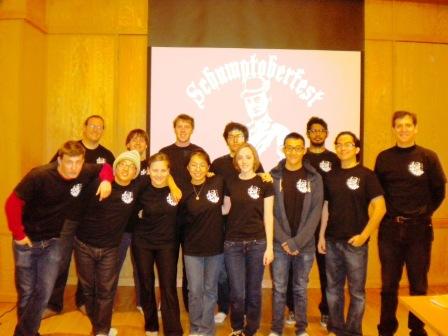Today we are treated to a discussion of the fashion industry from Ms. Richter & Ms. Li. The first from the Schumptoberfest collection. Enjoy!
______________________________________________________________
“The evolution of the capitalist style of life could be easily – and perhaps most tellingly – described in terms of the genesis of the modern Lounge Suit.” -Joseph Schumpeter
Creative destruction saturates the fashion industry; you must be the trend-setter otherwise the “foundation of your very life” will be in jeopardy. Large firms enjoy an advantage in spreading risk over many projects (e.g. inventions that never “catch” as a trend) and have the resources and brand power to set trends, thus helping their inventions turn into successful innovations, driving the fashion cycle forward through induced obsolescence. Due to lack of IP laws, large firms do not enjoy the monopolistic protectionism that IP rights provide, but they have other means justifying their investments. Schumpeter’s hypothesis suggests that large firms foment innovation for factors other than scale economies, and in the fashion industry, and the fashion cycle is a key example of this phenomenon.
 The fashion industry, a $200 billion industry in the United States alone, is comprised of nearly 150,000 establishments, ranging in size from large fashion houses to smaller start-ups. Although there are a large number of firms competing in the industry, according to the 2002 Census, five percent of firms in the clothing industry accounted for twenty percent of total revenue and sales. These large firms, , also play an important role in the diffusion of new design trends and the continuation of induced obsolescence, the dynamic force driving the fashion cycle forward; the influence of large firms contributes to the top-down structure of the industry.
The fashion industry, a $200 billion industry in the United States alone, is comprised of nearly 150,000 establishments, ranging in size from large fashion houses to smaller start-ups. Although there are a large number of firms competing in the industry, according to the 2002 Census, five percent of firms in the clothing industry accounted for twenty percent of total revenue and sales. These large firms, , also play an important role in the diffusion of new design trends and the continuation of induced obsolescence, the dynamic force driving the fashion cycle forward; the influence of large firms contributes to the top-down structure of the industry.
Consumers are not strictly motivated by price, but also pay attention to brand, quality, design differentiation, or trendiness (flocking). Because of complex consumer decision-making, product differentiation and new designs are essential to driving the industry forward Raustiala and Sprigman (2009) argue that induced obsolescence is the process by which designs, through copying and diffusion into mainstream fashion, become obsolete and therefore undesirable to fashion-forward consumers. These fashion-forward people then demand new designs, which are invented by top firms and diffused downward through trends, again, through copying. This process is called the fashion cycle. This cycle is very rapid and is completed each season.
